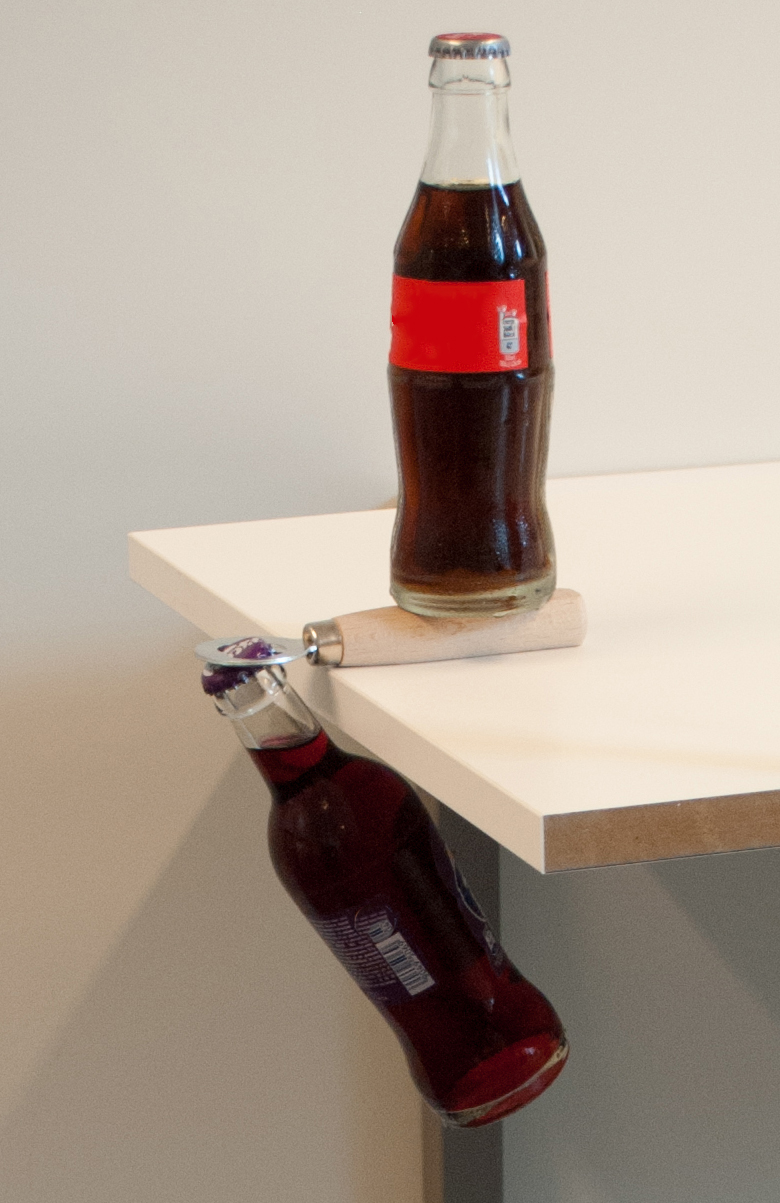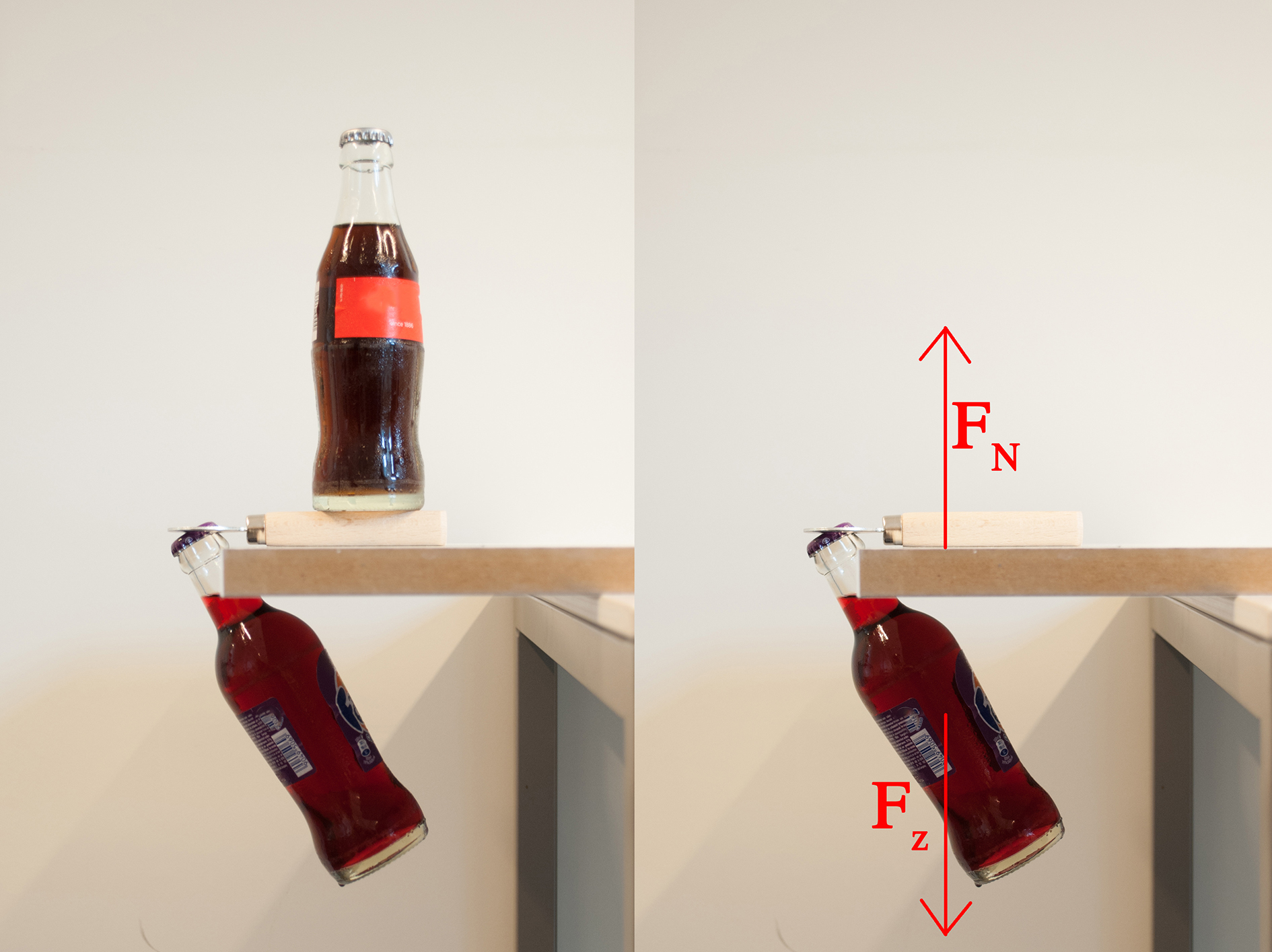17.8. Who dares?#
Stable equilibrium using small bottles
| Author: | Wouter Spaan |
| Time: | 5 minutes |
| Age group: | 14+ |
| Concepts: | (Stable) equilibrium, gravity, normal force, line of force |
Introduction#
This demonstration demonstrates the stability of an equilibrium when the center of mass is directly below its support. You can present this experiment as a challenge to the students, engaging them meaningfully.
Equipment#
Flat bottle opener
Two bottles with crown cork caps
Extra bottle-opener (of any design)
Cleaning utensils (if desirable)

Fig. 17.15 The setup. Who can drink the contents of the top bottle without touching the bottle opener or the bottom bottle?#
Preparation#
None, except gathering the equipment. The performance is more convincing if you prepare the set-up on the spot.
Procedure#
While setting up the experiment, emphasize the importance of the upper bottle by very diligently placing it on top of the opener while demonstratively pushing the opener down. You could provide a cleaning cloth or a mop in plain sight, warning the students that whoever makes a mess should clean it himself.
Now you have everyone’s attention, it is time to put up the challenge: drink from the upper bottle without touching the lower bottle or the bottle opener and without using any other equipment except for one extra bottle opener (only to be used to open the top bottle). Pretty soon a student will say something like: ‘you can just grab it’. The teacher’s challenge than becomes to test this student’s self-assurance. Is (s)he sure enough about this possibility to try it? Is the student willing to clean up the mess (s)he might make? Of course, you also ask why the student thinks (s)he can take the top bottle without breaking anything. When you feel the time is appropriate, the student can actually try the envisioned solution (and thus collect the reward).

Fig. 17.16 The top bottle is not necessary for balance. The lines of the normal force and the gravitational force can be aligned. In other words, the center of gravity is located below the support.#
If no student suggests the correct solution, you can play a little trick with your class. Take another bottle from below your desk with some other drink than is in the upper bottle (in the pictured case something else than coke). Now you slowly change this bottle with the original top bottle, lifting the original one clearly, saying something like: ‘perhaps you do not like coke?’
Tip
This demonstration can provide a valuable introduction to the differences between a stable, an unstable and an indifferent equilibrium. You can show that the system is in stable equilibrium by pushing the bottle opener (without the top bottle, but with the lower bottle) towards the edge of the table. Right before it topples, it will tilt slightly until the shifted center of gravity is exactly under the edge of the table, which now constitutes the support point.
Physics background#
The center of gravity of the lower bottle is below the support, formed by the bottle opener. Therefore, the system is in equilibrium even without the top bottle. Depending on the (required) level of the students you can explain this more thoroughly by drawing the appropriate lines of action. The lines of action of the gravitational force and the normal force are exactly aligned. The line of action of the normal force will position itself ‘automatically’ in this exact configuration, which is possible whenever the center of gravity is below the supporting surface. In fact, the normal force probably consists of many small normal forces. Adding them correctly will result in one single resultant normal force with the described property.
